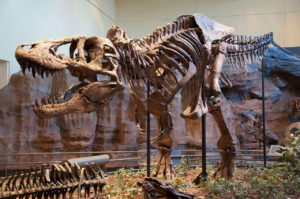Beowulf and Grendel
Isaiah 13:22
“And the wild beasts of the islands shall cry in their desolate houses, and dragons in their pleasant palaces: and her time is near to come, and her days shall not be prolonged.”
 In the epic Anglo-Saxon poem, Beowulf, the hero, at one point, meets a gruesome creature known as Grendel. Grendel has been terrorizing the neighborhood for twelve years. Beowulf is determined to kill this creature. He does this by ripping off Grendel’s arm, so that he runs back to his lair and dies in pain.
In the epic Anglo-Saxon poem, Beowulf, the hero, at one point, meets a gruesome creature known as Grendel. Grendel has been terrorizing the neighborhood for twelve years. Beowulf is determined to kill this creature. He does this by ripping off Grendel’s arm, so that he runs back to his lair and dies in pain.
Traditionally, Grendel has been described as a troll. Yet, the word troll does not appear in the poem. A troll is usually depicted as a small, hairy creature. But Grendel had bothered the locals for 12 years, and, using normal weapons, they had been unable to subdue it. Moreover, Grendel had a very large mouth and was able to bite off half a man. Yet, its arms were so puny that Beowulf was able to wrench its arm from its socket while being close enough to the creature that it could not bite him with its awful mouth. What sort of a creature was this?
Grendel lived in the swamp, where other creatures, the wyrms, lived. Wyrm is a Viking word for dragon. So the swamp creatures were reptilian. Was Grendel of similar kind? Indeed, although it is often thought that Grendel was the creature’s personal name, it seems more likely that this was the species name – this animal was a grendel. Grendels appear throughout England, as witnessed in place names like Grindleford, in Derbyshire.
Beowulf’s Grendel was a young of the species, yet stood taller than a man, had a huge mouth, puny arms, and walked on large, back legs. Many of us suspect that this was a post-Flood therapod – perhaps even a tyrannosaur. Author: Paul F. Taylor
You have placed amazing creatures in this world, Lord. Though some of them terrify us, we marvel at their diversity, and give all the praise to Your Name. Amen.
Ref: Cooper, W. (2nd edn 2014), After the Flood, (Kindle Edition, location 2002). Image: Tyrannosaurus, License: CC BY-SA 3.0.